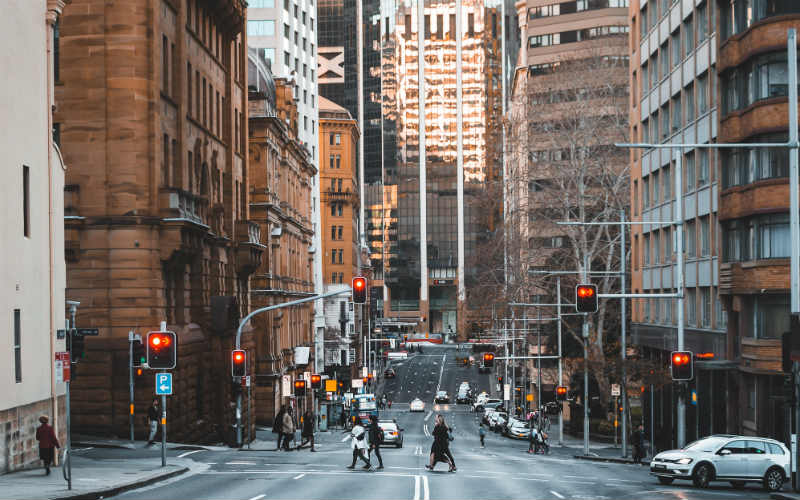Self-Managed Superannuation Funds (SMSFs) are a popular choice for Australians seeking greater control over their retirement savings. However, managing an SMSF comes with significant responsibilities and plenty of potential pitfalls.
The sole purpose of an SMSF is to provide retirement benefits to its members. This sole purpose test is the cornerstone of all SMSF activities, ensuring that the fund remains focused on securing members' financial futures. Any deviation from this objective can lead to compliance breaches and significant penalties. Trustees must always ensure their decisions and actions are aligned with this fundamental principle to maintain the integrity and compliance of the fund.
These are some of the common mistakes trustees make when operating an SMSF, as well as how you can avoid falling victim.
1. Failing to keep fund assets separate from personal
The assets of the SMSF must be held separately from any assets held by a trustee personally. One of the most fundamental mistakes is depositing the super balance into a personal bank account instead of the SMSF bank account. This can lead to compliance issues and make it difficult to track the fund's financial activities accurately.
Example: John, an SMSF trustee, deposited a significant sum of money intended for SMSF investments into his personal savings account. In addition, he used the SMSF funds to pay for personal expenses. This caused confusion during the annual audit as it was mixed with his personal assets and led to compliance issues.
Solution: Trustees must make sure they open a separate bank account for the SMSF and ensure all investments and assets are held in the name of the SMSF.
2. Acquiring property from a related party
Purchasing property that doesn't comply with SMSF rules, such as residential property from a related party, is a common mistake and can lead to severe penalties.
Example: Jumbo Super Fund purchased a holiday home from a brother of one of the fund's trustees, which he occasionally used for personal vacations. This is a clear breach of compliance.
Solution: Ensure all property investments comply with SMSF regulations. Avoid purchasing residential property from related parties and ensure any property investment aligns with the fund's Trust Deed and Investment Strategy. There is an exception to this rule where business real properties can be purchased from related parties.
Read more: How to buy property through an SMSF
3. Exceeding contribution caps
The Australian Taxation Office (ATO) sets annual contribution caps for concessional (pre-tax) and non-concessional (post-tax) contributions. Exceeding these caps can result in hefty tax penalties.
Example: Emma exceeded her concessional contributions during the 2024 financial year and she received a letter from the ATO informing her of significant tax penalties.
Solution: Before contributing, members should know how much they are able to deposit. An easy way to confirm your contribution cap is to access your personal ATO services via MyGov.
4. Lending money to members (above 5% of total assets)
Trustees are prohibited from providing loans, investing in or leasing to a related party of the fund for investments totalling more than 5% of the SMSF's assets.
Example: Tom loaned more than 5% from his SMSF to his daughter to help her start a business. This was a breach of compliance rules, resulting in a qualification during the audit process.
Solution: It's best to avoid any form of lending or financial assistance to members or their relatives. Ensure all fund transactions are in line with the sole purpose test and SMSF regulations.
Read more: Can an SMSF lend money to a third party?
5. Inadequate diversification
Lack of diversification can expose the SMSF to significant risk. Investing too heavily in one asset or asset class can lead to substantial losses if that investment underperforms.
Example: Lisa's SMSF invested 90% of its assets in a single mining company. When the company's stock plummeted, the fund suffered substantial losses.
Solution: Develop a diversified investment strategy that spreads risk across different asset classes. Regularly review and adjust your investment strategy to align with changing market conditions and personal circumstances.
6. Not adhering to the investment strategy
The investment strategy should guide all investment decisions and not following it can lead to a breach of compliance.
Example: Michael's SMSF had a clearly established strategy to invest primarily in blue-chip shares, but he instead diverted a significant portion into speculative start-ups without updating the strategy. This was flagged as a compliance issue.
Solution: Ensure all investments align with the documented investment strategy. Review and update the investment strategy regularly to reflect any changes in the fund's circumstances or market conditions.
7. Breaching related party transaction rules
Transactions with related parties that aren't conducted on commercial terms can lead to significant penalties.
Example: George's SMSF owns a business real property which he leased to his business and failed to pay rent for five months. This was not considered an arm's length transaction and resulted in a qualified audit report.
Solution: Ensure all related party transactions are conducted on an arm's length basis and that commercial terms are properly documented. Avoid any transactions that could be perceived as providing a financial benefit to related parties outside of the fund's permitted activities.
8. Storage and insurance requirements for collectibles
Acquiring assets, such as collectibles and personal use assets, that aren't stored correctly, is a common mistake that can lead to penalties. SMSF assets cannot be stored in the private residence of the trustee or any related party's residence.
Another common mistake is failing to insure the asset within seven days of purchase.
Example: David's SMSF purchased a vintage car as an investment but stored it in his personal garage and never insured. These led to compliance issues after an audit.
Solution: Trustees need to make sure SMSF assets are never stored at their private residence, or that of any related party. The trustee also must ensure to have an insurance policy for collectibles purchased in the name of the fund within seven days of acquisition.
Managing an SMSF can be rewarding, providing greater control over retirement savings and investment decisions. However, it also requires a thorough understanding of your responsibilities as well as the regulations involved. By avoiding these common mistakes and seeking professional guidance when needed, trustees can ensure their SMSF remains compliant, efficient, and aligned with their long-term financial goals.
Looking to take control of your retirement? This table below features SMSF loans with some of the most competitive interest rates on the market.
| Lender | Home Loan | Interest Rate | Comparison Rate* | Monthly Repayment | Repayment type | Rate Type | Offset | Redraw | Ongoing Fees | Upfront Fees | Max LVR | Lump Sum Repayment | Additional Repayments | Split Loan Option | Tags | Row Tags | Features | Link | Compare | Promoted Product | Disclosure |
|---|---|---|---|---|---|---|---|---|---|---|---|---|---|---|---|---|---|---|---|---|---|
6.74% p.a. | 6.76% p.a. | $3,240 | Principal & Interest | Variable | $null | $230 | 70% |
| Promoted | Disclosure | |||||||||||
6.99% p.a. | 7.04% p.a. | $3,323 | Principal & Interest | Variable | $0 | $220 | 70% | Disclosure | |||||||||||||
7.00% p.a. | 7.41% p.a. | $3,327 | Principal & Interest | Variable | $30 | $825 | 80% | ||||||||||||||
6.84% p.a. | – | $3,273 | Principal & Interest | Variable | $0 | $995 | 80% | ||||||||||||||
7.24% p.a. | 7.26% p.a. | $3,407 | Principal & Interest | Variable | $0 | $230 | 80% |
| Promoted | Disclosure |
Picture by Huy Phan on Pexels







 Denise Raward
Denise Raward
 Rachel Horan
Rachel Horan










